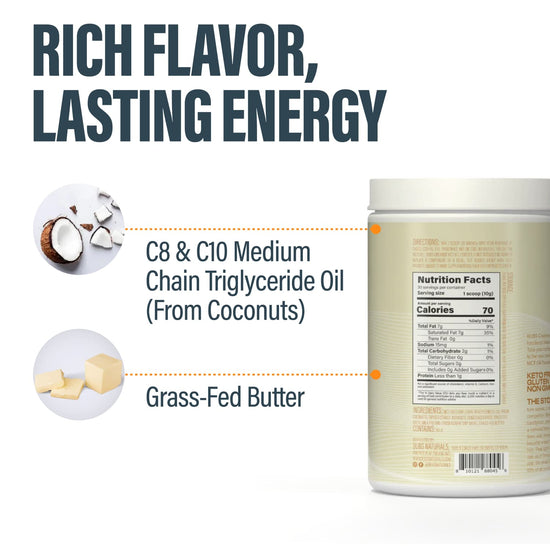Table of Contents
- Introduction
- Types of Non-Dairy Creamers
- How to Store Non-Dairy Creamers Properly
- Signs Your Non-Dairy Creamer Has Gone Bad
- Best Practices for Using Non-Dairy Creamer
- Conclusion
- Frequently Asked Questions (FAQs)
Introduction
Coffee is more than just a beverage; it's a ritual, a comfort, and for many, a daily necessity. But whether you're brewing a cup at home or getting your fix at a café, you might find yourself reaching for non-dairy creamer to add a touch of creaminess to your brew. However, how often do we stop to think about the longevity of that creamer? Many of us have likely opened a bottle of non-dairy creamer and wondered, “Is it still good?”
In this blog post, we'll explore the shelf life of non-dairy creamers, how to store them properly, and how to determine if they’ve gone bad. We aim to equip you with practical knowledge so you can enjoy your coffee without any second thoughts. By the end of this post, you'll be well-versed in the nuances of non-dairy creamer longevity, ensuring that every cup is as fresh and delicious as the last.
We will cover the following aspects:
- The different types of non-dairy creamers and their shelf life
- Proper storage techniques to extend freshness
- Signs that your non-dairy creamer has spoiled
- Best practices for using and maintaining your creamer
So grab your favorite mug, and let’s dive into the creamy world of non-dairy creamers!
Types of Non-Dairy Creamers
Before we delve into how long non-dairy creamers last, it's essential to understand the various types available on the market. Non-dairy creamers can generally be categorized into two main types: liquid and powdered. Each type has unique properties concerning shelf life and storage requirements.
Liquid Non-Dairy Creamers
Liquid non-dairy creamers are often made from plant-based ingredients such as almond, soy, coconut, or oat milk. They can come in a variety of flavors and are designed to mimic the creaminess of traditional dairy creamers.
- Shelf Life: Unopened liquid non-dairy creamers can typically last for about a month past their "best by" date when stored at room temperature. Once opened, they should be refrigerated and usually remain good for about 7 to 14 days, depending on the specific product and its ingredients.
Powdered Non-Dairy Creamers
Powdered non-dairy creamers are another popular option. They are made from a blend of sugar, vegetable oils, and other additives that allow them to stay shelf-stable for extended periods.
- Shelf Life: Unopened powdered non-dairy creamers can last for up to two years, making them incredibly convenient for occasional use. Once opened, they should ideally be consumed within 3 to 6 months for the best taste and quality.
How to Store Non-Dairy Creamers Properly
Storage plays a crucial role in determining the shelf life of your non-dairy creamers. Here are some key tips on how to store both liquid and powdered varieties effectively.
Storing Liquid Non-Dairy Creamers
-
Refrigerate After Opening: Always store opened liquid creamers in the refrigerator to slow down spoilage. The cooler temperatures help prevent the growth of bacteria and extend freshness.
-
Keep Away from Door: Although many of us store liquid creamers in the refrigerator door, it’s better to keep them in the main compartment. The door experiences more temperature fluctuations each time it's opened.
-
Seal Tightly: After each use, ensure the cap is tightly sealed to minimize exposure to air, which can lead to quicker spoilage.
Storing Powdered Non-Dairy Creamers
-
Cool, Dry Place: Store powdered creamers in a cool, dry place, away from direct sunlight and humidity. A pantry or cupboard is usually ideal.
-
Airtight Container: If the original packaging is not resealable, consider transferring the powdered creamer to an airtight container to prevent moisture from getting in.
-
Avoid Odor Absorption: Keep powdered creamers away from strong-smelling foods, as they can absorb odors and affect the flavor.
Signs Your Non-Dairy Creamer Has Gone Bad
Even with proper storage, it’s essential to know when your non-dairy creamer has passed its prime. Here are some common signs to look out for:
For Liquid Non-Dairy Creamers
- Off Smell: If the creamer develops a sour or rancid odor, it's time to discard it.
- Change in Texture: Liquid creamers should be smooth and pourable. If you notice any lumpiness or curdling, it's best to throw it away.
- Taste Test: If the creamer smells fine but you’re still unsure, a quick taste test can help. If it tastes off or unusual, don’t risk it.
For Powdered Non-Dairy Creamers
- Clumping: If the powdered creamer has clumped together, it's often a sign of moisture exposure. While not always a health hazard, it can affect the texture and taste.
- Strange Odor: A bad smell can indicate spoilage; if it smells off, it’s safer to discard it.
- Expiration Date: Always check the expiration date. While powdered creamers can often last longer, they can still spoil if not stored correctly.
Best Practices for Using Non-Dairy Creamer
Now that we’ve covered how to store and recognize spoilage, let’s look at some best practices for using non-dairy creamers effectively.
-
Use in Moderation: A little non-dairy creamer goes a long way. Start with a small amount and adjust based on your taste preferences.
-
Experiment with Flavors: With a wide variety of flavors available, don’t hesitate to mix and match to find your perfect coffee blend.
-
Incorporate Into Recipes: Beyond coffee, consider using non-dairy creamers in smoothies, baking, or cooking for added creaminess and flavor.
-
Monitor Your Supply: If you find yourself not using your non-dairy creamer regularly, consider opting for smaller containers or powdered options that last longer.
Conclusion
Understanding how long non-dairy creamer lasts and how to store it properly can enhance your coffee-drinking experience and prevent waste. By knowing the differences between liquid and powdered varieties, practicing proper storage, and recognizing spoilage signs, you can enjoy your coffee without worry.
Non-dairy creamers offer a convenient and versatile addition to our favorite brews, allowing us to customize our coffee to suit our taste. Whether you prefer the smoothness of liquid creamers or the long shelf life of powdered options, keeping these tips in mind will ensure that your coffee remains delicious and enjoyable.
As we strive to lead active, adventurous lives, let’s make every cup count—one scoop at a time!
Frequently Asked Questions (FAQs)
1. How long can I keep non-dairy creamer after opening?
Opened liquid non-dairy creamers should generally be consumed within 7 to 14 days when refrigerated. Powdered creamers can last for 3 to 6 months once opened.
2. Can I freeze non-dairy creamer to extend its shelf life?
While it's possible to freeze non-dairy creamer, it may affect the texture and quality once thawed. If you choose to freeze it, make sure to thaw it in the fridge.
3. What should I do if I accidentally consume expired non-dairy creamer?
Generally, consuming a small amount of expired non-dairy creamer is unlikely to cause serious harm, but it may lead to mild digestive discomfort. If you experience severe symptoms, seek medical advice.
4. Can powdered non-dairy creamers go bad?
Yes, powdered non-dairy creamers can go bad, especially if exposed to moisture. Check for clumping, off smells, or changes in taste before using.
5. How can I tell if my non-dairy creamer is still good?
Check for changes in smell, texture, and taste. If anything seems off, it’s best to err on the side of caution and discard the product.
Written by:

Butter MCT Oil Creamer
BUBS Butter MCT Oil Creamer (formerly Halo Creamer): Scientifically-Backed Brain and Body Fuel
BUBS Butter MCT Oil Creamer is your go-to for clean, fast-acting energy and focus, no crash included. It blends creamy grass-fed butter with fast-acting MCT oil powder (C8 and C10) to kickstart your day and keep you sharp. The MCTs go straight to work, giving your brain a quick boost while the grass-fed butter supports digestion and gut health.
Together, they help curb cravings, keep you feeling full longer, and support steady energy throughout the day—perfect for fueling your mornings or powering through the afternoon slump.
Starts at $37.00
Shop

